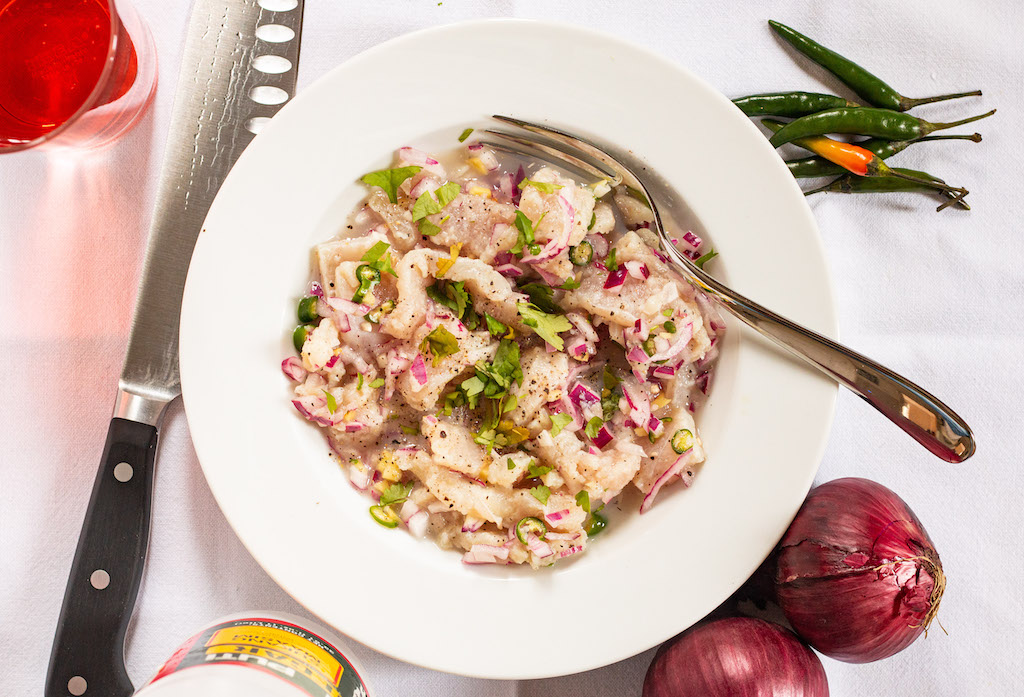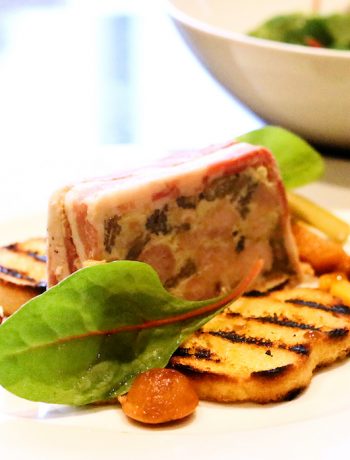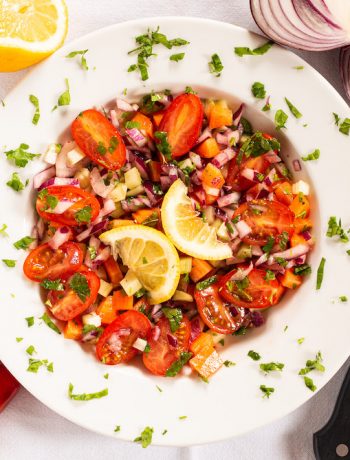Kinilaw is a daughter recipe of ceviche, and is essentially the Filipino version of the Peruvian classic. The origin story is simple in that both Peru and the Philippines were colonised by the Spanish. Ceviche in its original form (before 12-year-old Pedro Solari simplified it) has been around for hundred of years. It is obvious that the Spanish, having seen it made in Peru, would have taken the idea to the Philippines where refrigeration was rare and pickling was the solution to everything.
If you are used to eating and making ceviche, then think of kinilaw as ceviche turned up to 11. There is more vinegar (and harsher), more chilli, and the dish is often finished with a dash of coconut milk.
I made my kinilaw with tuna, and served it immediately with no extended curing time.
Kinilaw
Ingredients
- For the marinade:
- 2 tuna steaks, very thinly sliced
- 1 red onion, finely chopped
- 3 finger chillis, chopped
- 1 thumb-sized piece of fresh ginger, peeled and thinly sliced
- Juice of 1 lime or 2 calamansi
- 3 tbsp white vinegar (Datu Puti)
- Pinch of salt
- Pinch of MSG
- 70ml coconut milk (optional)
- To finish:
- Handul of coriander, chopped
Instructions
Combine all the marinade ingredients in a bowl, mix for a couple of minutes.
Add the coriander and serve.






3 Comments
RealBisaya
29/05/2024 at 2:39 amI’d like to point out that kinilaw is 1,000 years older than Spanish ceviche so you have it the other way. The earliest mention of kinilaw was on 1613 in Vocabulario de la Lengua Tagala as cqinicqilao and cquilao, being the Hispanized version of Visayan “kilaw” – meanwhile, the Peruvian ceviche’s earliest mention was only in 1820. Going back further, balangay archaeological excavation site in Butuan (dated 10th – 13th century AD) uncovered remains of halved tabon-tabon fruits and fish bones cut in a manner suggesting that they were cubed, thus indicating that the cooking process is at least a thousand years old.
Nigel Eastmond
29/05/2024 at 10:34 amThanks so much for this. Based on what you say, I might be prepared to bet that it was invented separately. Firstly in the Philippine islands, and again in Peru. I much prefer the slight kick of a kinilaw to the blander ceviche.
Pinoyboy
11/08/2025 at 2:44 pmKinilaw is culturally Austronesian, it is not a “daughter” of ceviche. After all, Citruses originated in Southeast Asia and Southern China. Critruses were only introduced to Peru by the Spaniards during colonization.
Aside from citrus, coconut vinegar is an additional acid added, which is an austronesian commodity originating in the Philippines and Indonesia.
Southeast Asians and other austronesians in Madagascar to the pacific island have their own versions of cooking fish in citrus and coconut vinegar because the food itself originated in Southeast Asia, possibly in the Visayas region.